Solus
An app intended to improve late sleep behaviour by having a tailored plan for individuals.
Skills
Design research
Synthesis
Wireframing
UX Design
Prototyping
Timeline
3 weeks
(Nov-Dec 2021)
Tools
Figma
Premiere Pro
Context
Sleep Well
“Smartphones made people stay up late.”
People struggle to go to sleep due to numerous temptations. (eg. YouTube, Netflix) that was derived from technological advancement.
Challenge
“How might we help them have healthier sleep behaviour by making morning rewardable?”
Sleep is considered to be less rewarding and more stressful as you are aware that there are works to do tomorrow once you get up in the morning.
Numerous temptations encourage them to procrastinate from thinking about the morning, and they end up staying up late.

Introducing Solus
Make morning with rewarding moments
The app improves late sleep behaviour by having a tailored plan for individuals. Every morning, users would be rewarded for themselves.
In the long term, people will be able to have a healthy sleep cycle for themselves with their sleep progress track and statistics.
Scroll down to view my design process!
How did I design Solus?
Identify the Core Reason for InSuffiecient SleepIng Habits and Patterns.
Research
Why do people stay up late?
Having Quality Sleep
“Self-regulation interventions” could improve sleeping behaviour.
Getting adequate sleep requires more than just setting a bedtime (especially considering that self-regulation comes with thoughts and feelings, and not just behaviours).
Here are some recommended routines before going to bed.
Power-Down Hour: composed of three 20-minute segments:
Hygiene (such as a hot bath).
Relaxation (such as meditation, prayer, or journaling).
Adequate hours of Sleep for Health
“By adulthood, most healthy people need 7 to 8.5 hours,” says psychologist and sleep disorder specialist Michelle Drerup, PsyD, DBSM.
Kids and adults need to sleep 7 to 9 hours on average according to the Centre for Disease Control and Prevention.
Manufacturers’ promote features to healthy sleep pattern.
iOS Sleep Mode let users to set a bedtime with reminder and allows them to track your sleep.
Research People
5 Surveys were done and 3 Interviewees responded regarding their sleep behaviour.
3 survey respondents showed interest in improving or adjusting their sleep patterns.
They all mentioned they are tempted to stay up late to watch some entertainment: Netflix, and TV shows.
In the interviews, people were motivated to improve their sleep behaviour to have a better physical condition and less feeling fatigued.
What are the needs?
Sleep is Less Rewarding
Sleep is less rewarding as there are works to do tomorrow once you get up in the morning.
It made people procrastinate: although they want to sleep well.
However, interviewees were aware of the benefit of having healthy sleep, which was having better physical health and more possible productive work hour.
Control obsession with media
Numerous temptations to stay up late (eg. Youtube, Netflix, Games).
“How might we help them have healthier sleep behaviour by making morning rewardable?”
Brainstorming ideas
Initially, I had two ideas to figure out a solution to get immersed in people's lifestyles.
The first idea was to create a dedicated device that tracks a person's sleep cycle. This device could provide insights into a person's sleep patterns and highlight any areas for improvement.
The second idea was to create a mobile app that would allow users to input information about their daily routines and habits. The app could use this information to provide personalized recommendations for improving their overall health and wellness.
Then I IMPLEMENTED THESE INSIGHTS ONTO MOBILE APP.
Since people are heavily integrated with digital devices, especially smartphones, a mobile application is a conventional and easy medium to maximise user access and behavioural change.
Solus
Improve sleep and reward your morning.
Reward your morning
Cheat Days and Morning Activities
Users can use their morning with something they want to do to start the day off with happiness.
Users can reward themselves every week/month with an all-nighter.
Plan for you
Know your sleep pattern with a simple questionnaire and suggest suitable plans.
The app assess individuals' sleep pattern by answering questions and customise suggested plan accordingly to personal preferences.
Track Your Sleep
With Infographics about your sleep progress and statistics.
On a daily basis, the app informs sleep reminder, and sleep cycle overview to encourage people to follow their plan.
And on weekly basis, Stamp card will inform how many dates you have left for cheat day to motivate users.
Examine and Prescribe
Throughout designing the user experience, I envisioned how my app impact users' behaviour changes in the long term and how the in-app experience would encourage users to succeed to complete their personalised plan.
I figured that the foundation for the successful transition for better sleep was tailoring their plans to achieve realistic goals.
I was inspired by the doctor's appointment process: Examine the symptoms and learn the patient's condition, then provide medication or solution with future appointments to check-in the progress update.
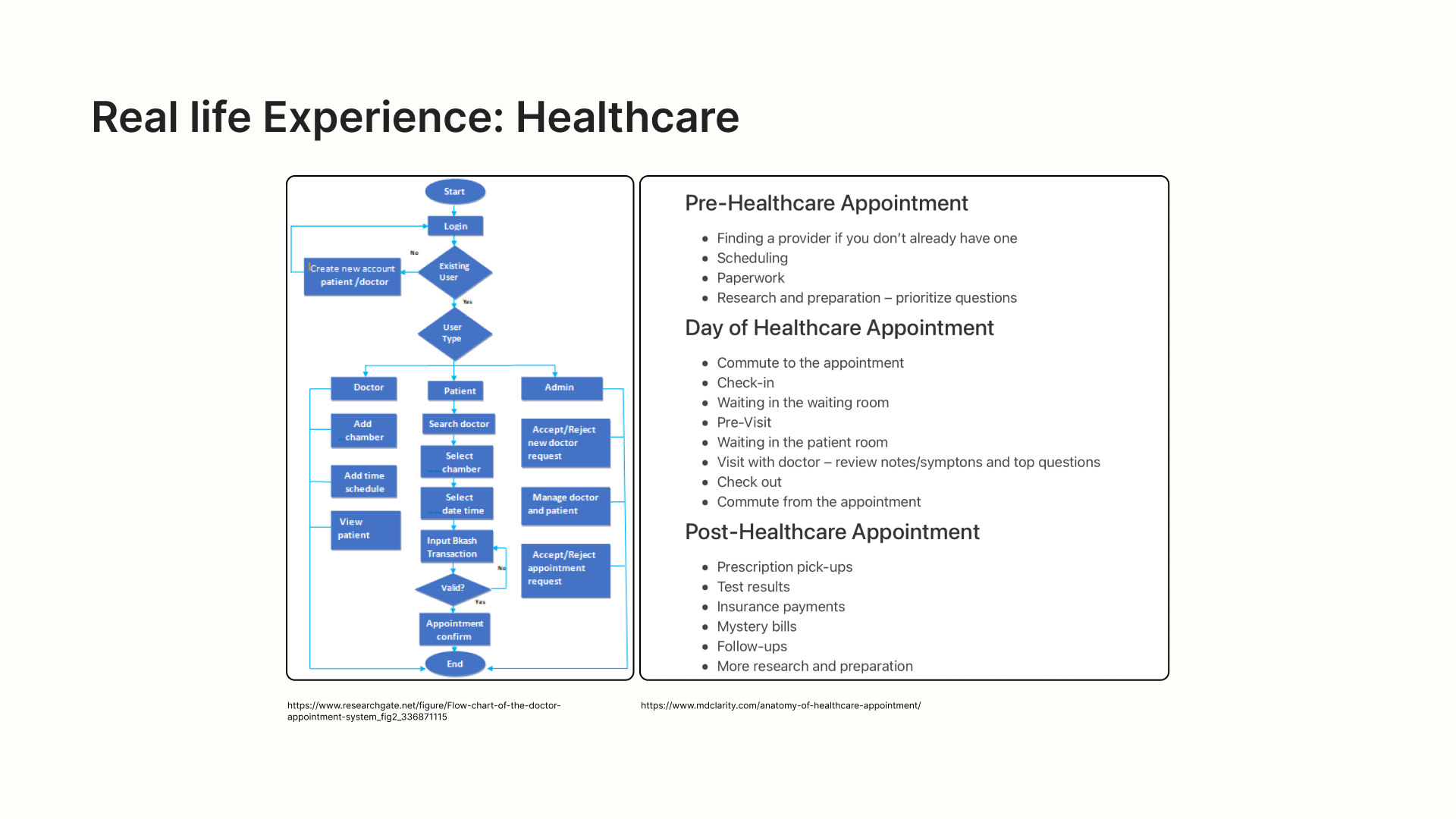
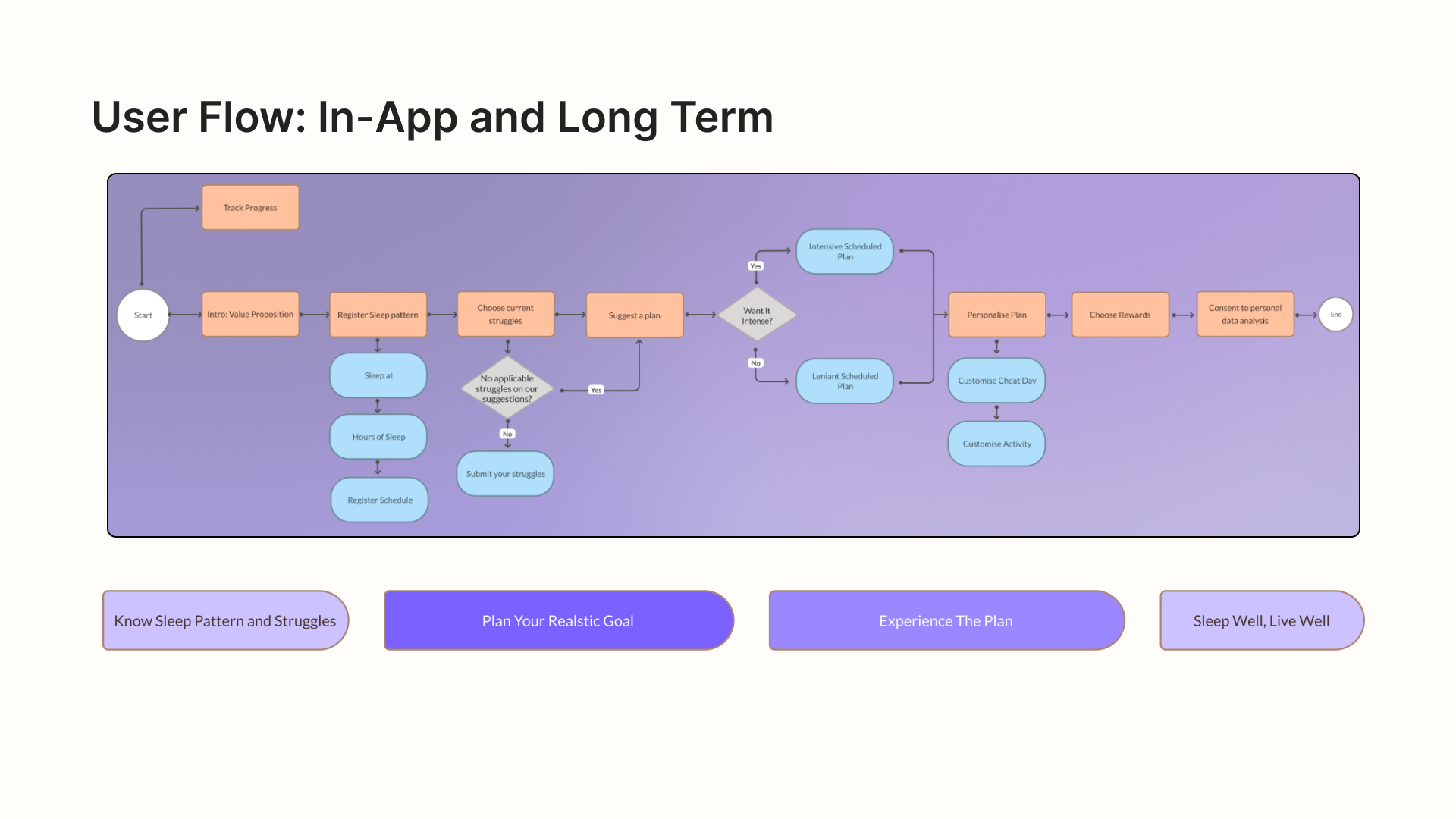
Designing Screens
As I design wireframes for a mobile app, I carefully considered how to effectively present the necessary information at specific points in the user experience. Each stage of the user journey requires a unique set of information, so I take care to allocate it accordingly on each screen.
From the home screen to the setup process for planning a better sleep cycle, I strategically placed relevant content and features so that users can smoothly progress through the app without confusion or frustration. By thoughtfully designing wireframes, I ensure that the app is user-friendly and intuitive, ultimately creating a satisfying experience for the user.
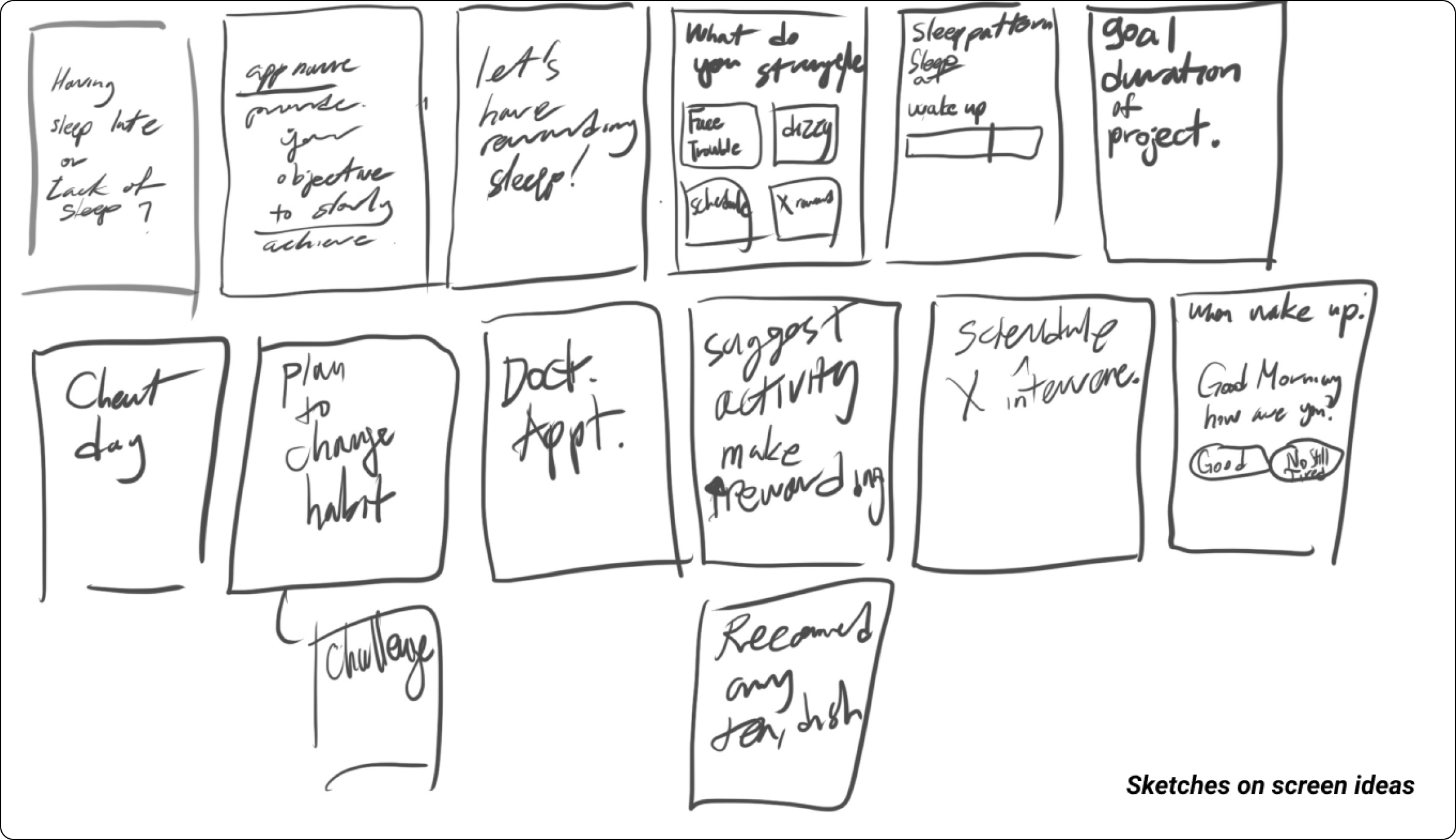
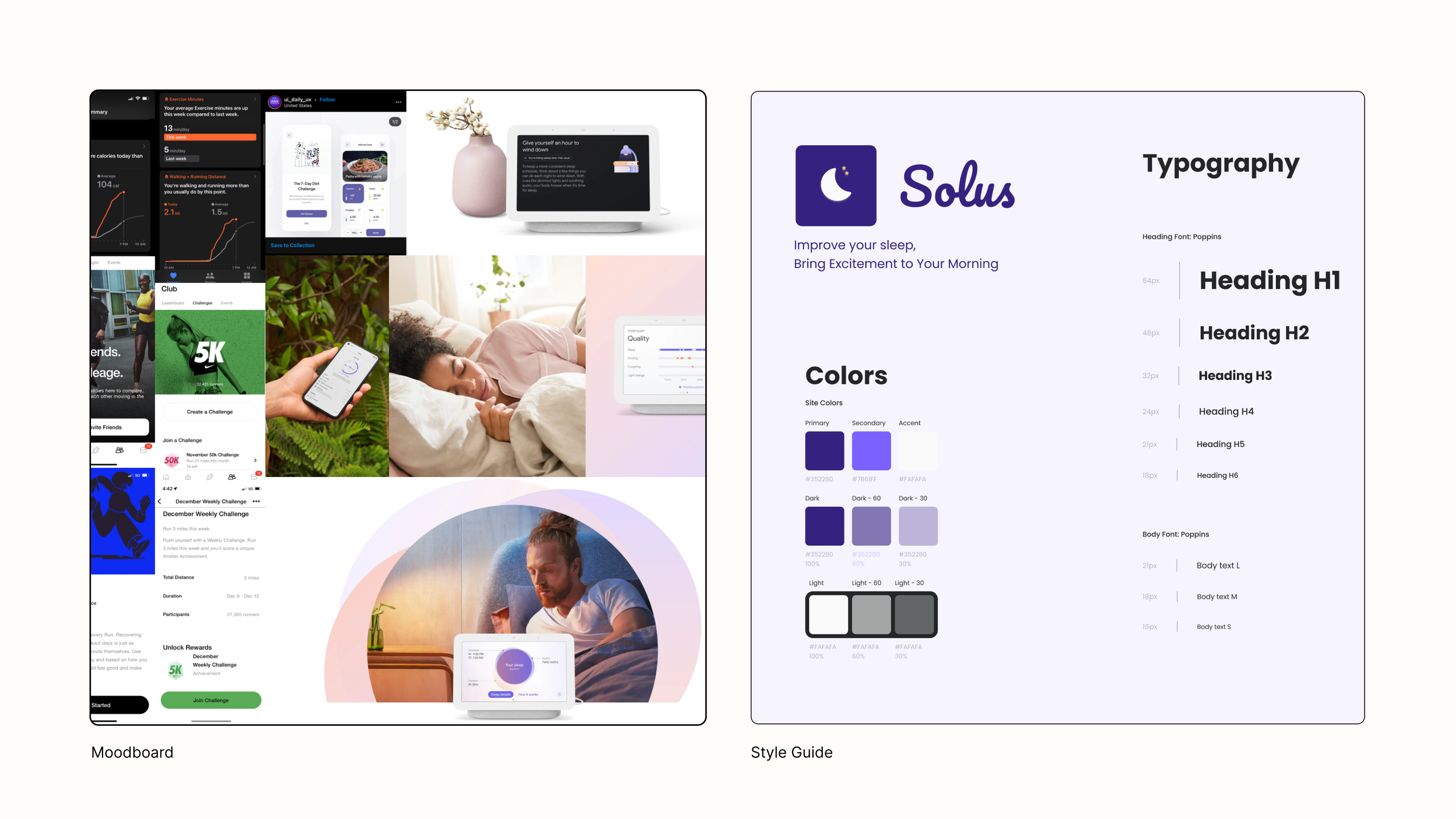
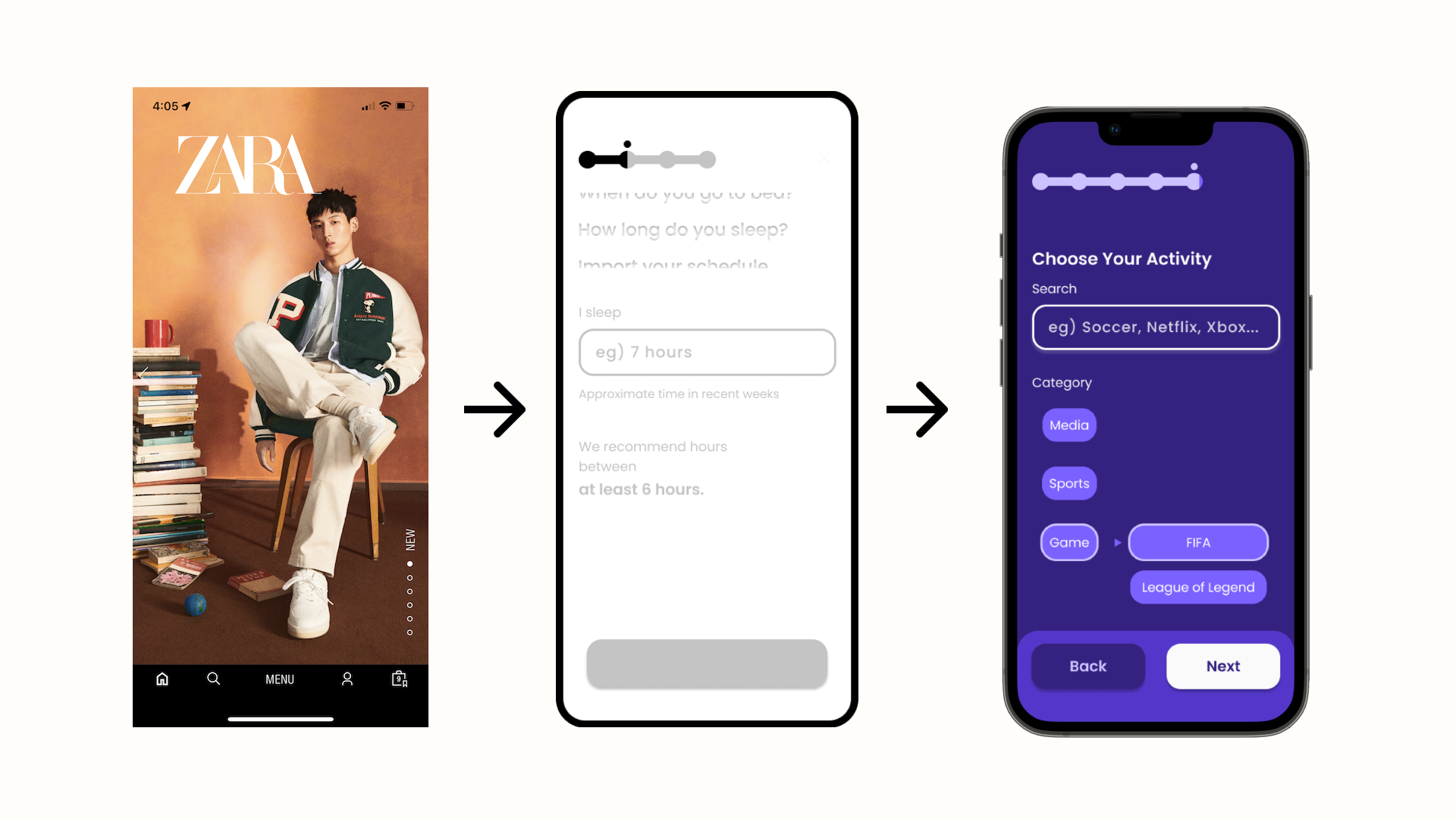
Inspiration to Wireframe: Easy Navigation
Easy Navigation.
I applied breadcrumbs while users assess their sleeping pattern and dot indicator for the cards, and have a bottom tab to easily navigate to view in-app contents.
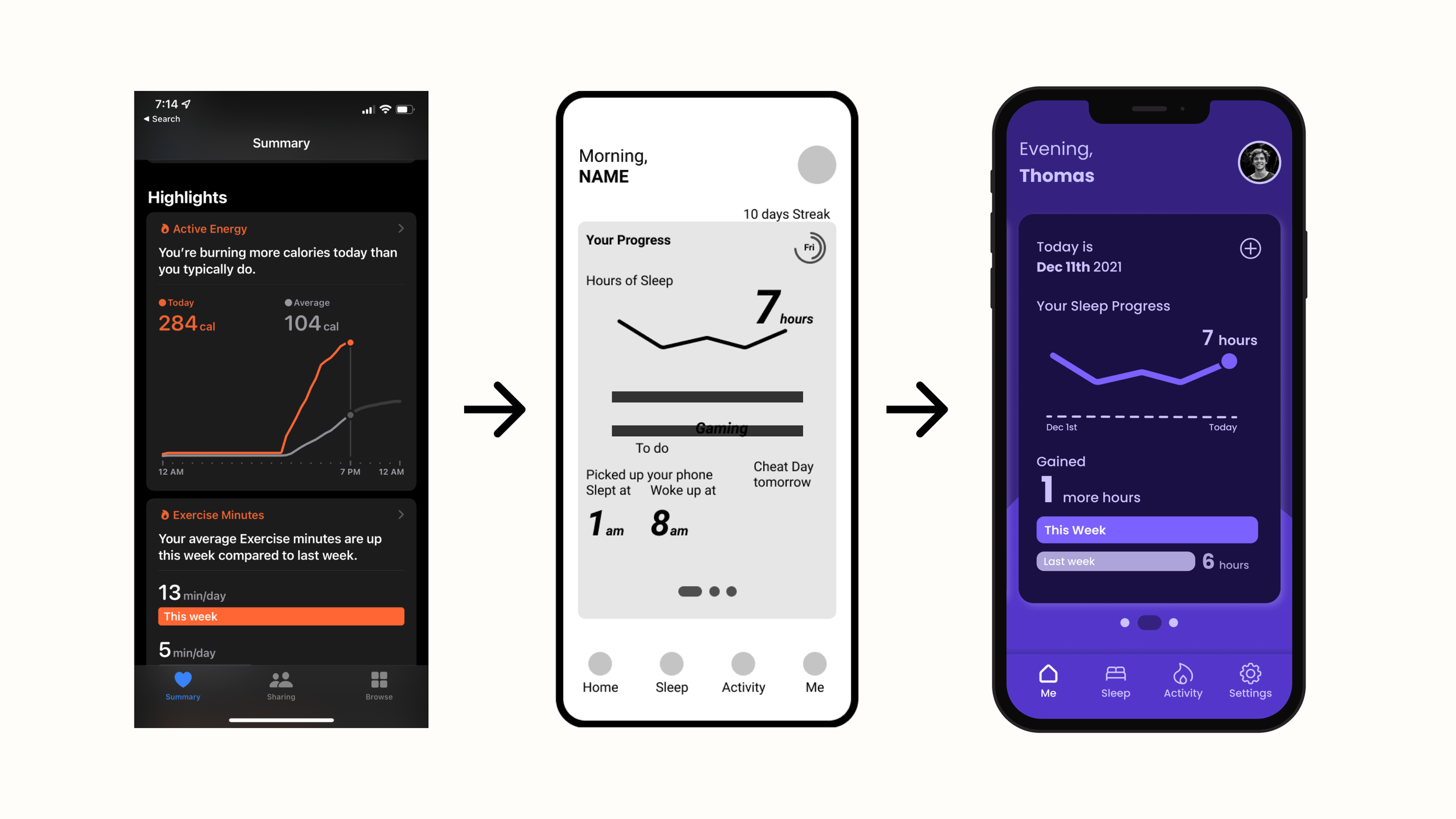
Intuitively view progress to maintain motivation to achieve goals.
Designing cards that visually inform users' progress in different timeframes: daily check-ins with diagrams to guide users to follow the plans day by day, weekly progress with graphs, and stamp cards to present long-term progress. The successful design would effectively inform users’ progress and potentially motivate users to prolong their desire to achieve the given long-term goal.
Wireframes
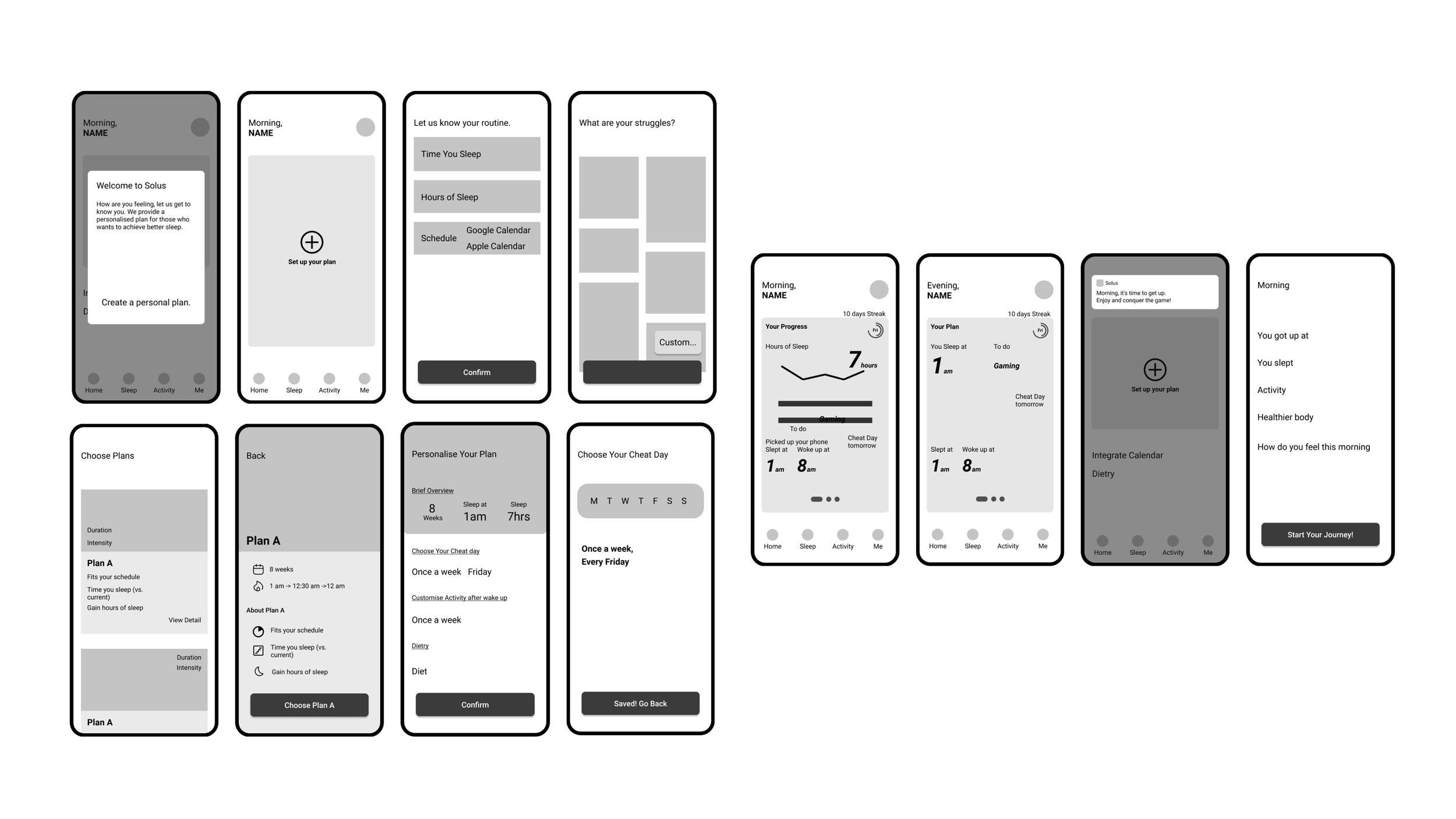
Final Design
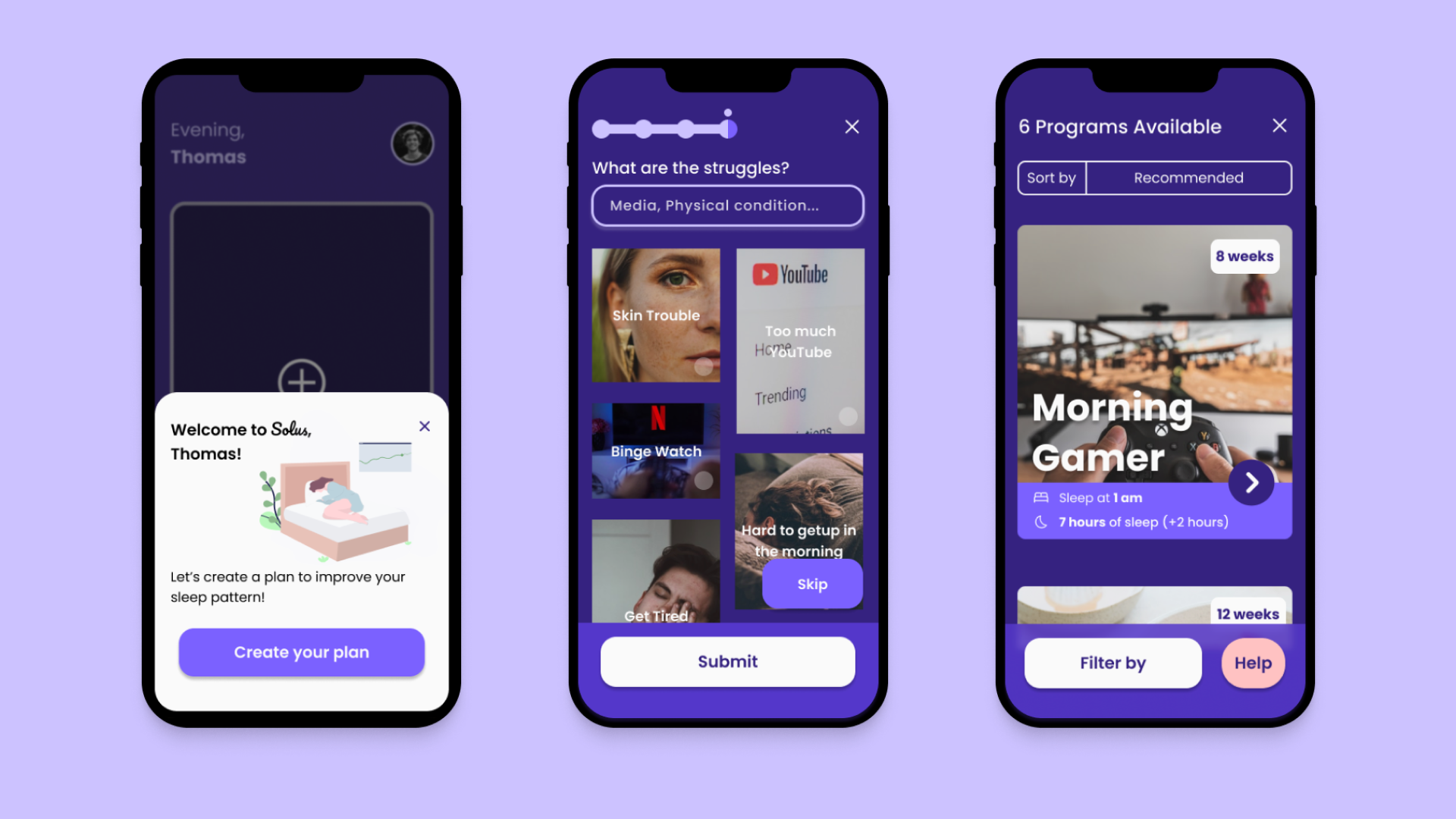
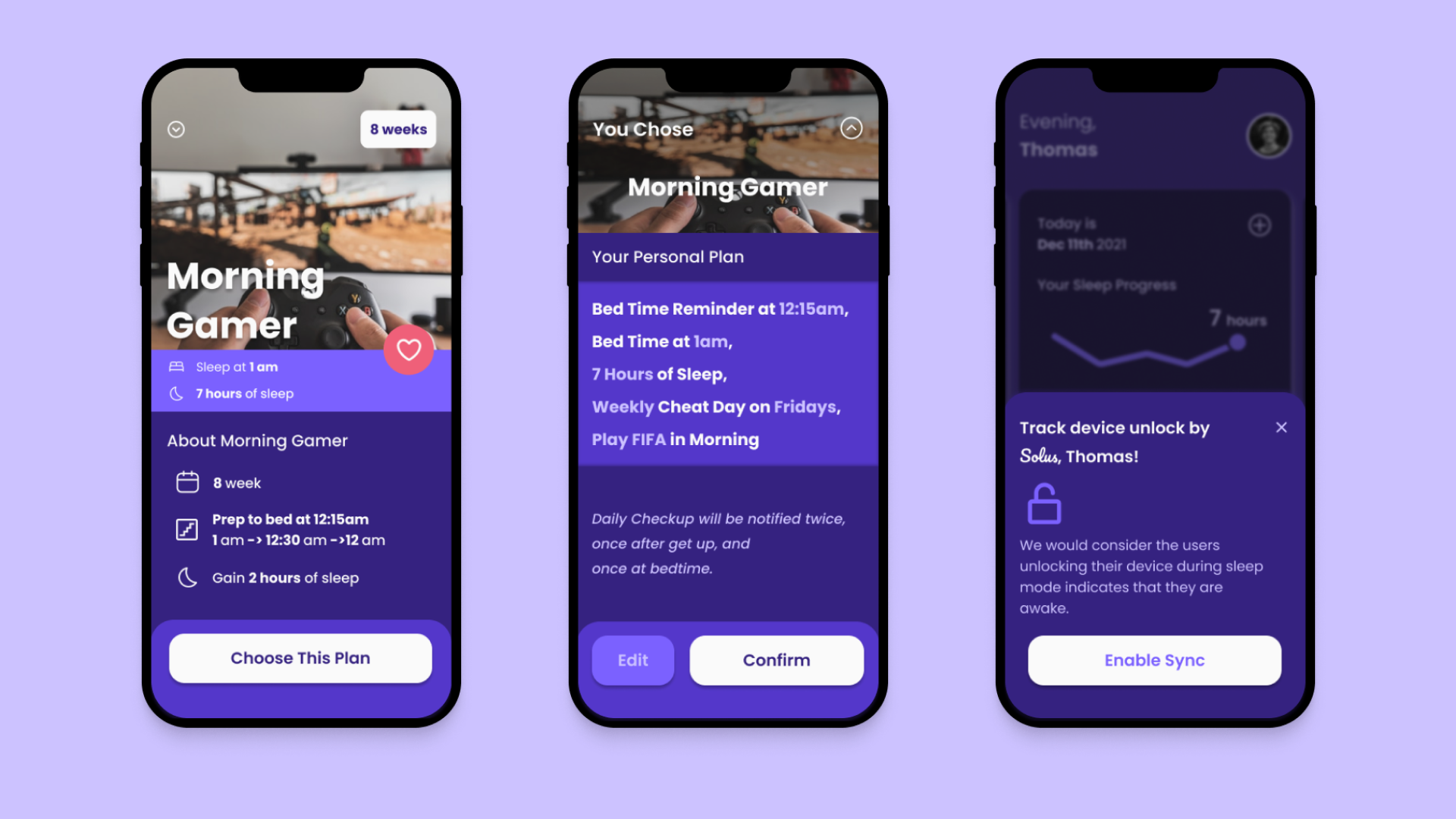
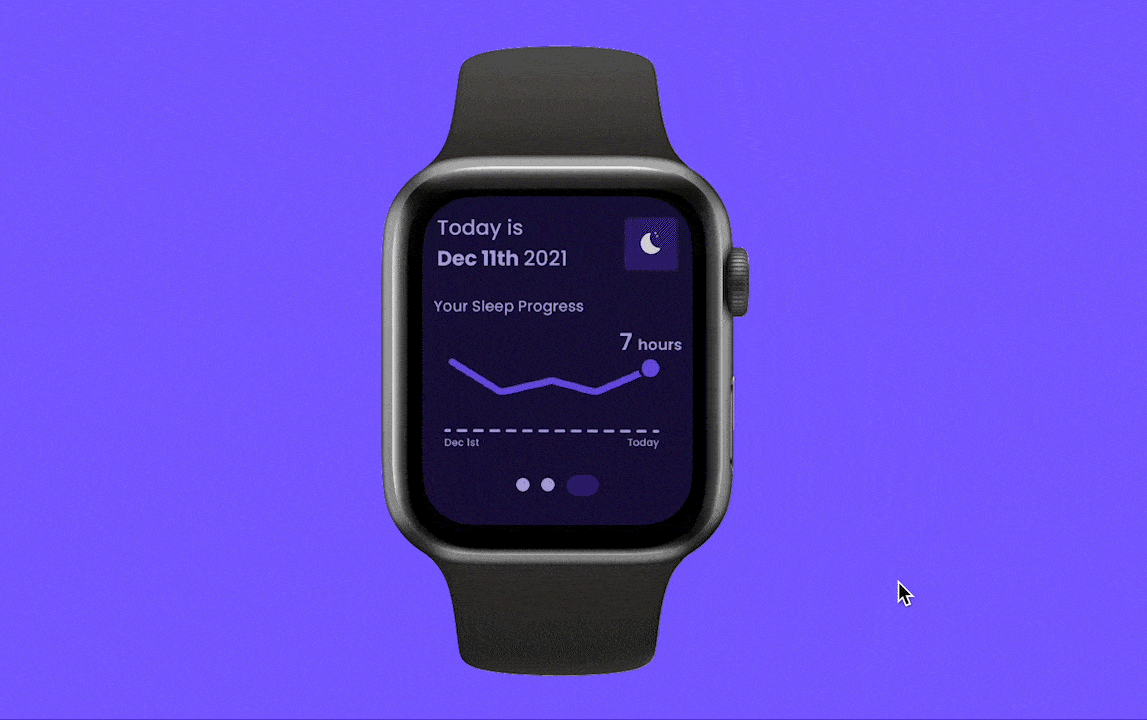
View Mobile App Prototype
Takeaway
So far, I have achieved compelling visual aesthetics for the app, showcasing rich texture, color, and graphics to bring an immersive user experience. However, I acknowledge the importance of validating design through usability testing to ensure a user-friendly product.
Apart from that, I am keen on applying more design thinking to explore ways to keep users motivated in the long term. After all, designing an engaging app is only half the battle. Understanding how an app would influence user behavior in real life is also key to creating a successful product. Will users be more productive, lively, or innovative with the app? These are the kind of questions that I am excited to explore further as I delve deeper into the app design process.










